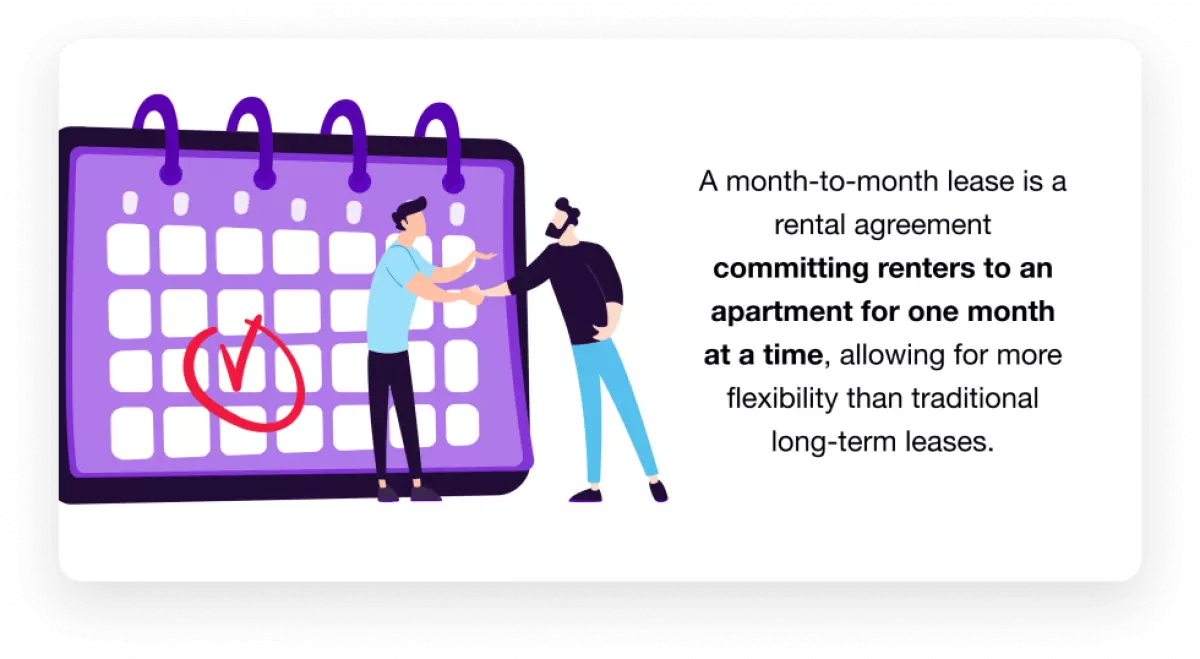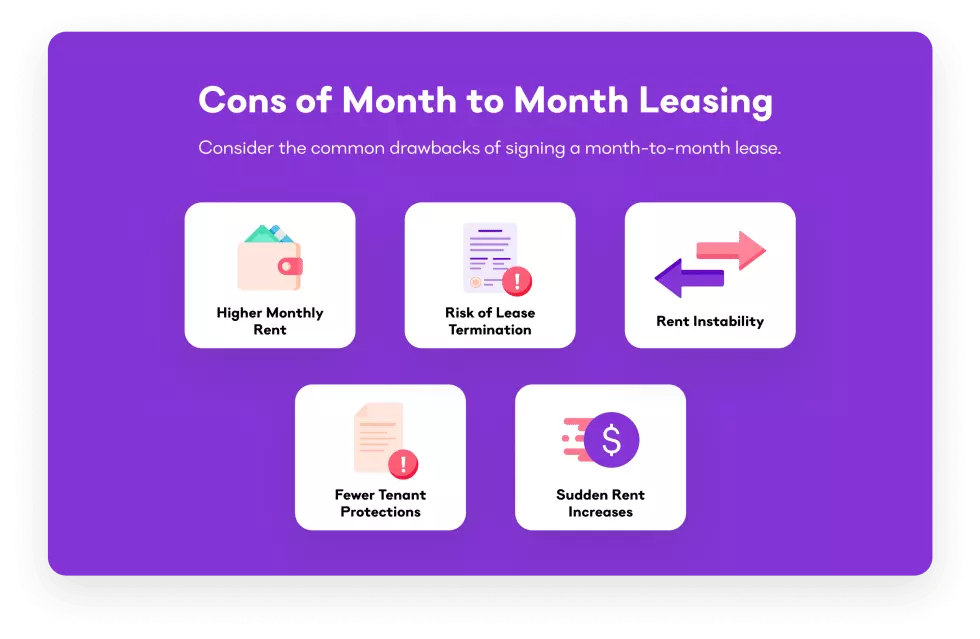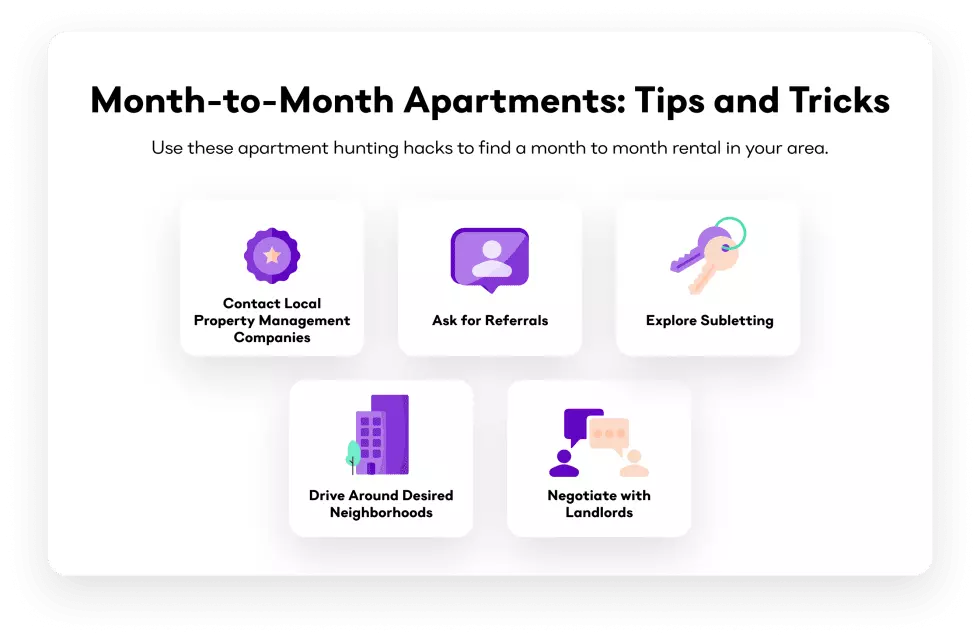Are you searching for a flexible housing solution in today's ever-changing world? Look no further than a month-to-month lease. This unique living option combines the convenience of short-term arrangements with the potential for long-standing agreements, giving you the freedom to move frequently or experience a new city without long-term commitments. In this comprehensive guide, we'll explore everything you need to know about month-to-month leases and how to find them.
Month-to-Month Rentals: A Complete Overview
Let's start by understanding what exactly a month-to-month lease is. Also known as a 'periodic tenancy,' this flexible rental agreement between a tenant and landlord doesn't have a predetermined termination date. Instead, it renews automatically each month until either party issues a legally-recognized notice to end the agreement. This flexibility allows either the landlord or tenant to terminate the lease at any time, for any reason, with a stipulated notice period.
While month-to-month leases are commonly associated with short-term rentals, they can extend for several years if the tenant-landlord relationship is stable and mutually beneficial. It's important to note that while tenants enjoy the liberty to relocate with relatively short notice, they also face the possibility of being asked to vacate on short notice if the landlord decides to terminate the lease. Understanding your personal needs and the implications of a month-to-month lease is crucial in deciding if it aligns with your lifestyle.
 Caption: With month-to-month leases, you have the flexibility to adapt to changes in your life.
Caption: With month-to-month leases, you have the flexibility to adapt to changes in your life.
How Do Month-to-Month Leases Work?
Month-to-month leases operate on an automatically renewing system, providing ongoing occupancy until either the landlord or tenant decides to opt out. This rental agreement offers significant flexibility, allowing either party to terminate the lease as long as they adhere to the agreed-upon notice period.
Understanding your notice period is essential in a month-to-month lease as it governs how quickly you or your landlord can make changes to the rental situation. This notice period gives both parties time to prepare for the change, whether it's finding new tenants for the landlord or securing new accommodation for the renter.
Pros and Cons of a Month-to-Month Lease
Before signing a month-to-month lease, it's essential to weigh the pros and cons. Let's take a closer look:
Pros of a Month-to-Month Lease
- Added Flexibility: A monthly rental agreement keeps your life more flexible, allowing you to avoid penalties for breaking a traditional lease early.
- Limited Penalties: When you terminate a monthly lease and move on, there are few, if any, penalties and fines involved.
- Good Path to a Full-Time Lease: If you have a less-than-ideal credit history, month-to-month leases can be a great way to build a relationship with a landlord and prove that you're a reliable tenant. This can make it easier to convert to a full-time lease in the future.
- Less Financial Risk: Month-to-month leases minimize financial risks by avoiding the hefty penalties often associated with breaking long-term lease agreements.
 Caption: Month-to-month leases provide added flexibility and minimize financial risks.
Caption: Month-to-month leases provide added flexibility and minimize financial risks.
Cons of a Month-to-Month Lease
- Expensive Rent Prices: Renting on a month-to-month basis is generally more expensive than signing a traditional lease. Apartments often offer tiered pricing based on lease length, with longer leases being more affordable.
- Risk of Lease Termination: With flexible lease terms, your landlord has the ability to terminate your contract as long as they provide the legally required notice. Unlike a full-time lease, where your apartment remains yours for a longer duration, month-to-month leases allow both parties to terminate in the short-term.
- Rent Instability: Short-term leases may come with rental instability and raises in rental costs.
- Fewer Tenant Protections: Month-to-month leases often provide fewer tenant protections, leaving renters more vulnerable to sudden changes in lease terms.
Understanding these pros and cons will help you decide if a month-to-month lease is the right choice for you. Now, let's explore how to effectively terminate one.
 Caption: Consider the potential downsides before signing a month-to-month lease.
Caption: Consider the potential downsides before signing a month-to-month lease.
How to Terminate a Month-to-Month Lease
To terminate a month-to-month lease, you must provide a formal notice to vacate letter typically 30 days in advance (this may vary based on local laws). Adhering to the specific legal requirements in your area, including the method of delivering the notice, is crucial. It's important to retain proof of the notice being received. After delivering the notice, it's advisable to arrange a final apartment inspection to discuss the return of your security deposit and address any potential deductions.
By following this streamlined process, both landlords and tenants can conclude their lease agreement amicably and legally, avoiding any unnecessary complications. Always review your lease agreement and local laws for the most accurate guidance.
Is a Month-to-Month Lease Right For You?
Flexible lease terms are ideal if you anticipate significant life changes in the near future, such as a career move, relocating to a new area, expecting a child, or getting married. They also work well for renters purchasing a home or undergoing renovations, as well as those who want to try out an unfamiliar location.
How to Find Month-to-Month Rental Apartments Near You
When using Apartment List's services, you can filter for month-to-month leases while filling out the quiz to be matched with the right apartment. If you have your eye on a place that doesn't explicitly state that they accept month-to-month leases, don't be afraid to inquire. You can use our internal messaging system to reach out to any landlord and ask about a month-to-month rental option. Feel free to use the template below as a starting point for your inquiry:
 Caption: Inquire with landlords about month-to-month rental options.
Caption: Inquire with landlords about month-to-month rental options.
Month-to-Month Rental Inquiry Template
"Hi there!
I am writing to express my interest in the apartment available at [Property Address] as I believe it would be a great fit for me. I am particularly interested in finding a flexible leasing arrangement and wanted to inquire whether you offer month-to-month leasing options. Given my circumstances, a month-to-month lease would be ideal as it provides me with the flexibility to adapt to any potential changes in the future. If month-to-month leasing is available, I would greatly appreciate receiving more information about the terms, rental rates, and any specific requirements you might have.
Additionally, I would be happy to provide you with any necessary information or references to facilitate the application process. Please feel free to contact me via email at [Email Address] or by phone at [Phone Number] to discuss the leasing options further or to schedule a viewing.
Thank you for considering my inquiry.
Best, [Your Name]"
Let Apartment List Help You Find a Month-to-Month Rental
Now that we've provided you with a comprehensive guide to month-to-month leases, it's time to decide if the flexibility is worth the trade-offs of higher prices and potential rent instability. If you're already renting, consider speaking to your current landlord about changing from a long-term to a short-term lease. Alternatively, you can take Apartment List's quiz to find the perfect rental for you.
Month-to-Month Lease FAQs
Q: Are Month-to-Month Apartment Rentals Expensive?
A: Yes, month-to-month leases are typically more expensive than 12-month rental agreements. Some landlords offer tiered rental systems based on lease length, with longer leases providing more savings.
Q: Can Landlords Raise the Rent on a Month-to-Month Lease?
A: Yes, one drawback of a month-to-month lease is the possibility of rent increases. In most cases, landlords can raise the rent to reflect market rates with a 30-day notice.
Q: What Happens if I Don't Give Proper Notice when Terminating a Month-to-Month Lease?
A: Failing to give proper notice may result in penalties, such as being responsible for an additional month's rent.
Q: Does a Month-to-Month Lease Need to be Signed Every Month?
A: No, month-to-month leases automatically renew every month until one party legally terminates the lease.
Q: What Is Another Name for a Month-to-Month Lease?
A: A month-to-month lease is also known as a short-term lease or short-term rental agreement.
Q: What Is Periodic Tenancy?
A: Periodic tenancy is a leasing arrangement with no specified end-date. Month-to-month leases often fall under periodic tenancy, allowing renters to renew indefinitely as long as the landlord does not wish to terminate the agreement.
Q: What Is Tenancy-at-Will?
A: Tenancy-at-will is an arrangement between a landlord and tenant with no written contract. It can be terminated at any time and differs from most traditional month-to-month leases.











